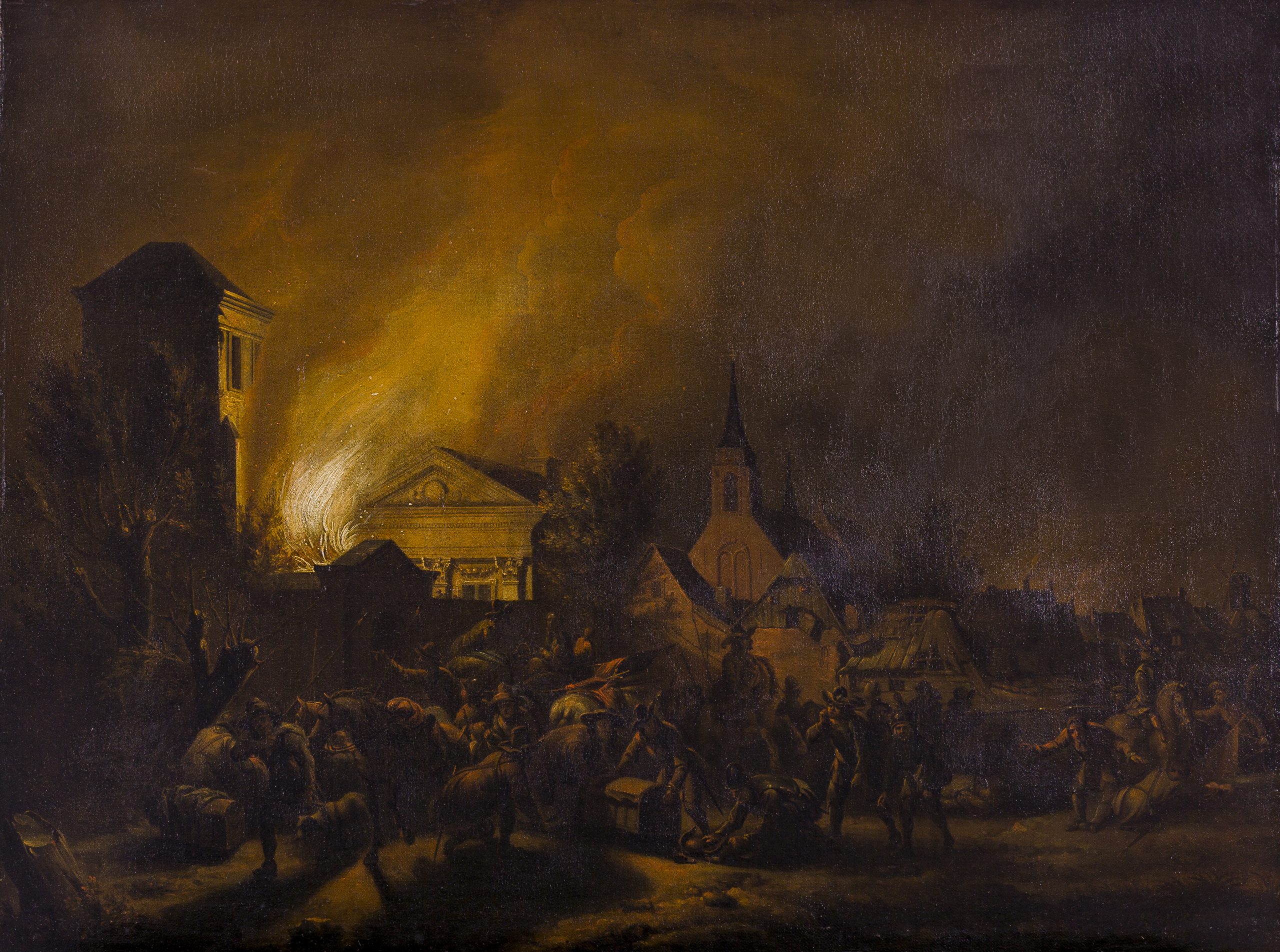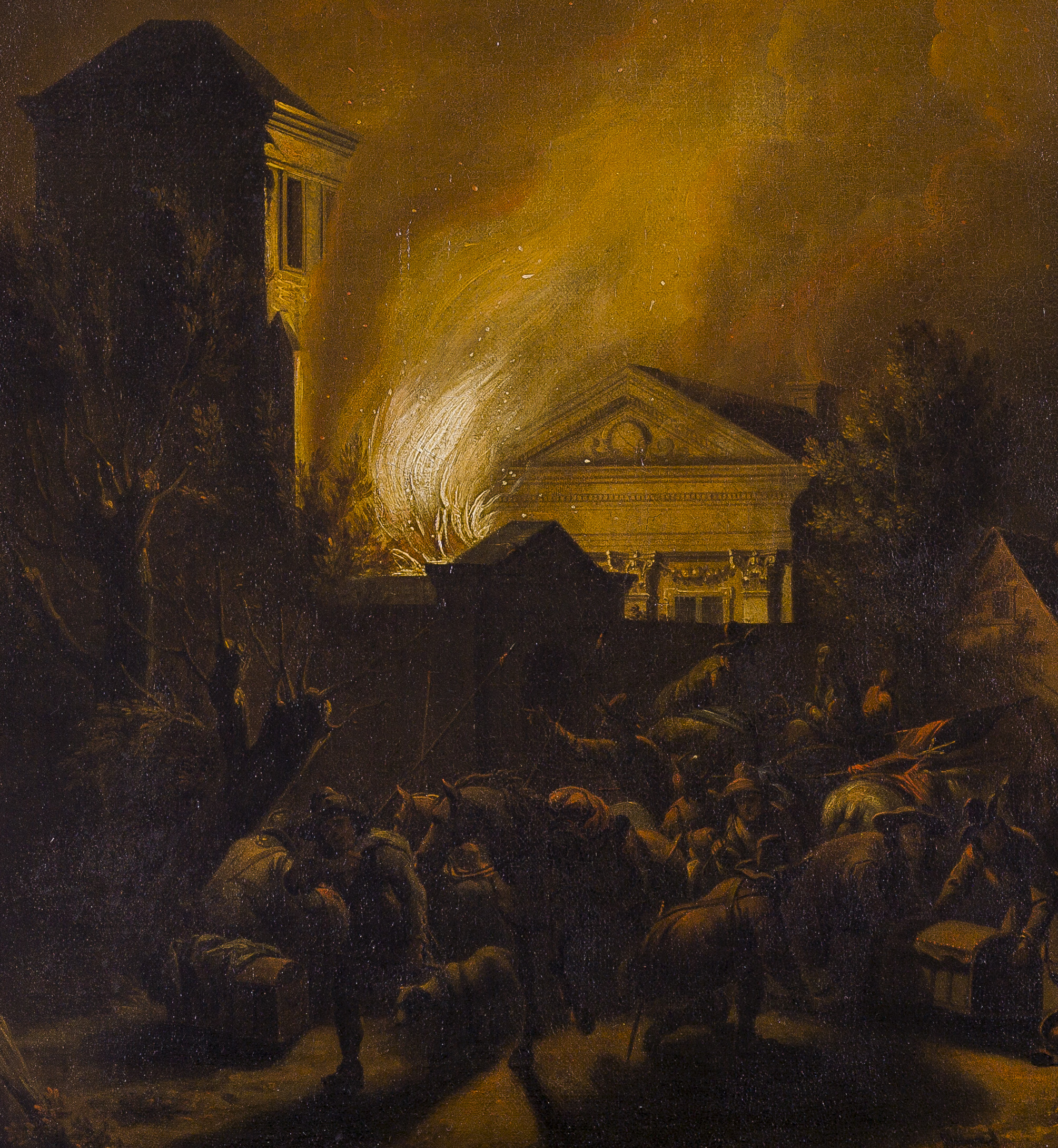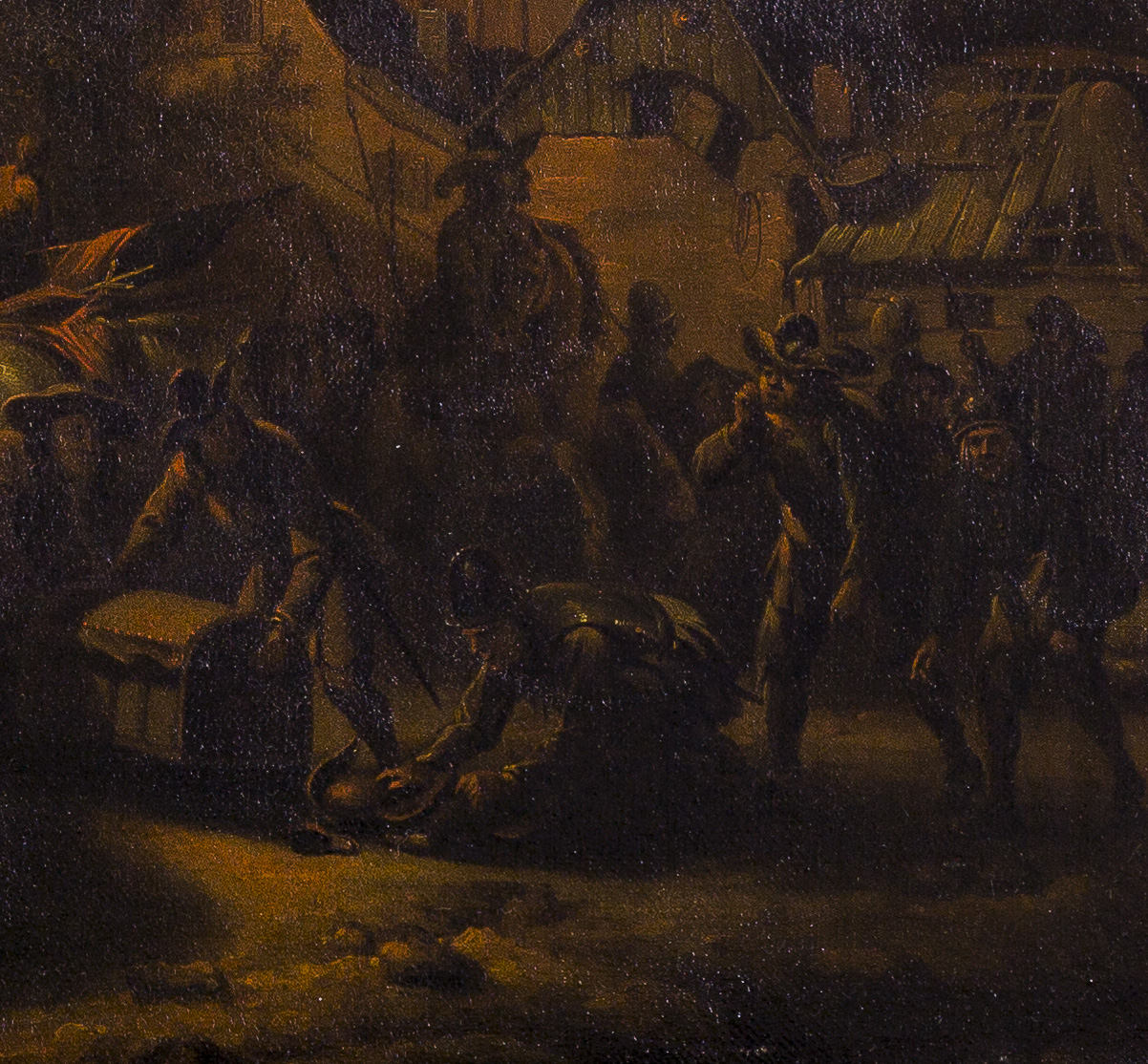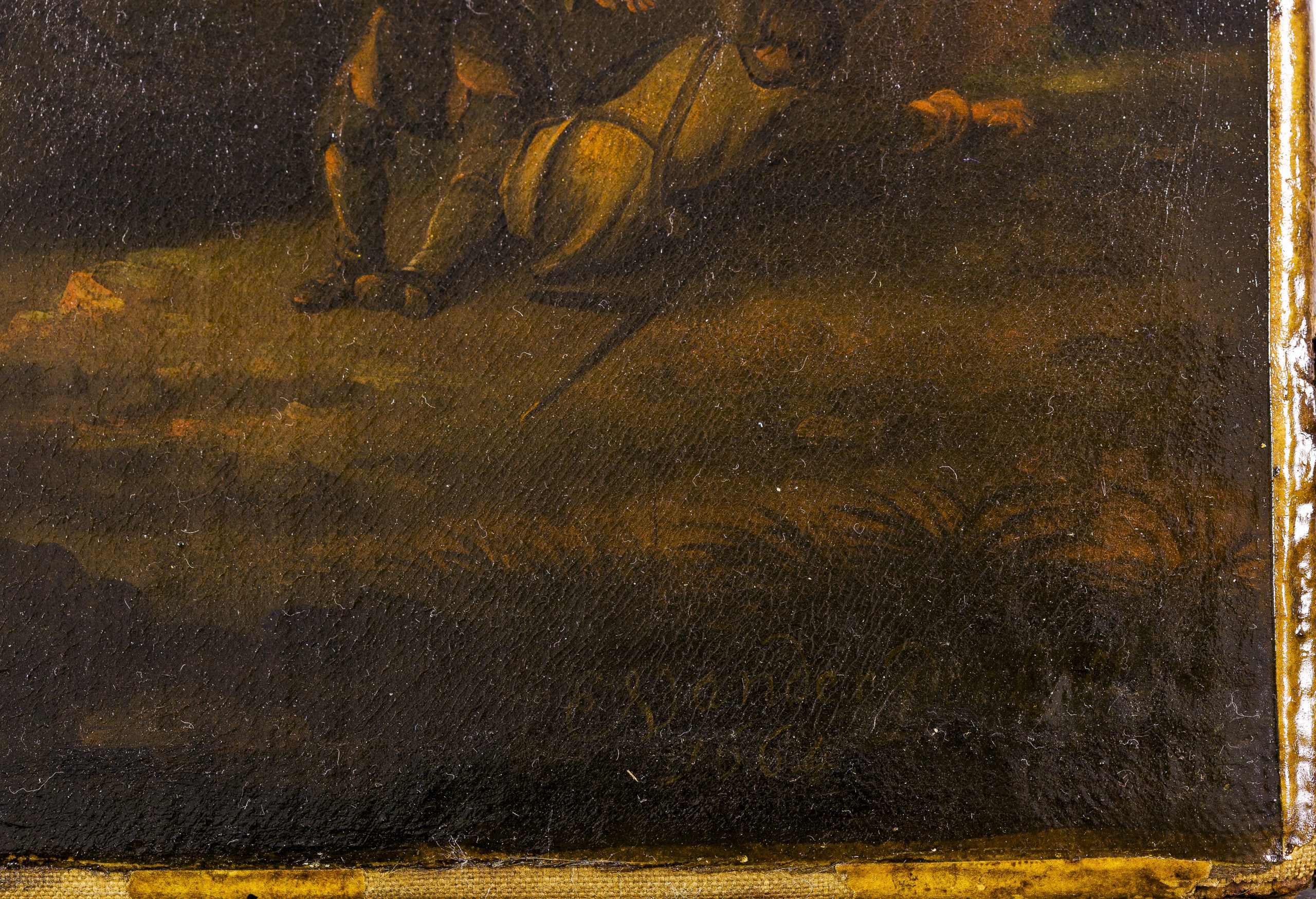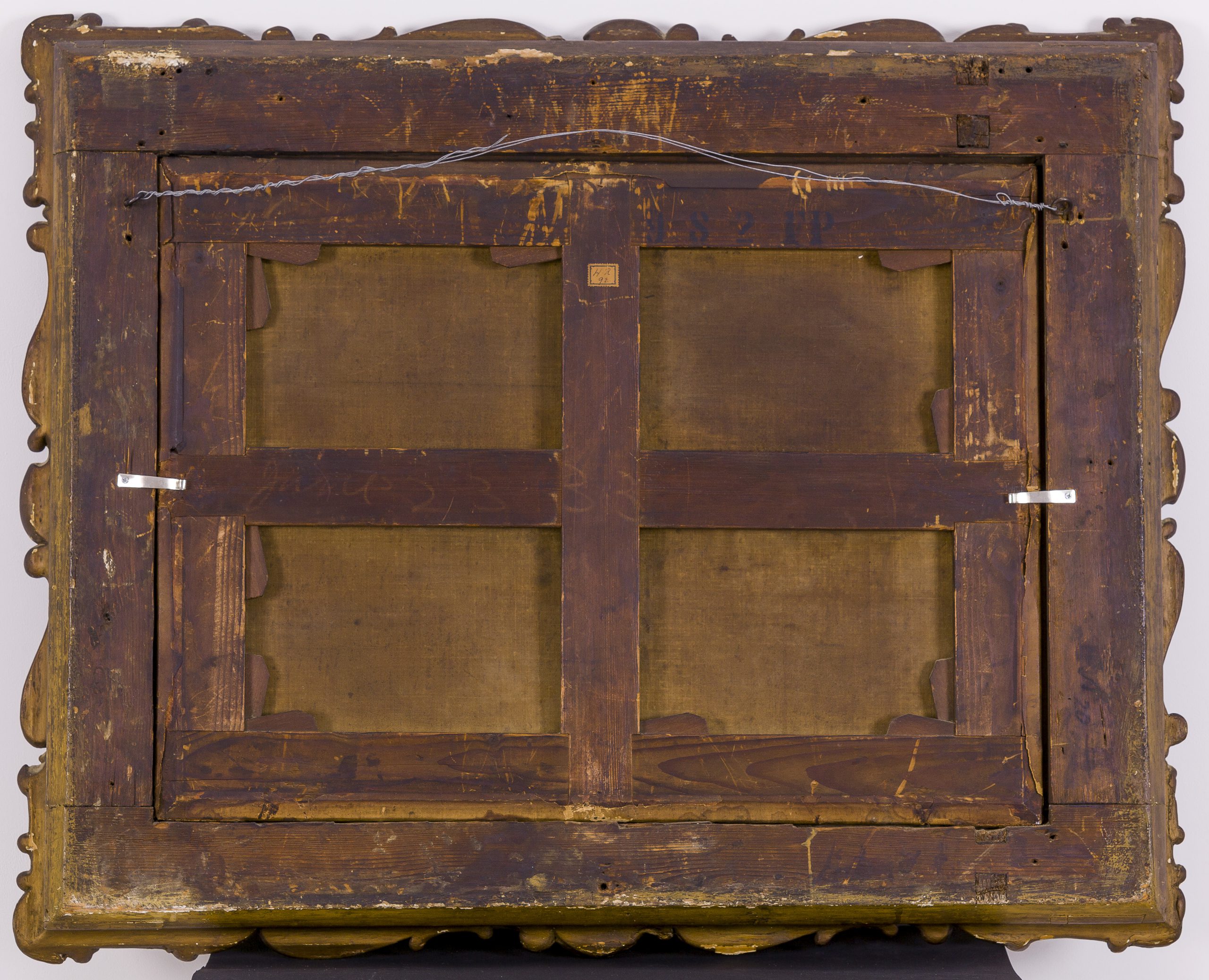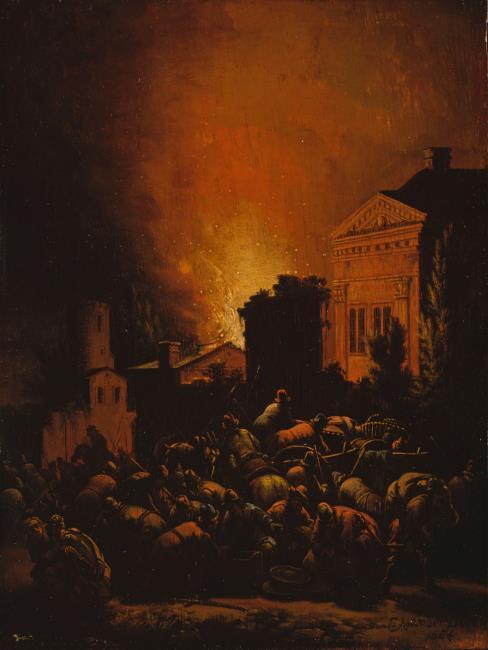EGBERT LIEVENSZ VAN DER POEL (Delft 1621 – 1664 Rotterdam)
Egbert Lievensz van der Poel (Delft 1621 – 1664 Rotterdam)
Fire in a Town by Night
Oil on canvas, 49 x 65 cm (19.3 x 25.6 inch); presented in a 19th-century carved and gilt frame
Signed and dated ‘Evander Poel / 166(4?)’ (lower left)
Provenance
Private collection, The Netherlands
***
Van der Poel was born in Delft, but he is mainly associated with Rotterdam, where he is believed to have had his training in the studio of Cornelis Saftleven.1 In 1650, the artist enrolled in the St Luke’s Guild in Delft, but after the devastating explosion of a gunpowder store on 12 October 1654, in which he lost a child, he decided to leave the city for good and to settle in Rotterdam.
Van der Poel’s interest in disasters, as reflected in his village fires, is also clear from the many paintings he made of the gunpowder explosion in his native city. There was evidently a lively market for scenes of this kind, a seventeenth-century variant of today’s ‘disaster tourism’. But it was above all his brandjes (fires), as they were called, that made him famous. He was even celebrated in his own day as Holland’s best ‘fire painter’. The technique of depicting fire was discussed as a separate theme in painting manuals, with the correct use of colour and the careful observation of real fires featuring as the main points of emphasis. Among his followers are Adam de Colonia, Willem Gillisz Kool and Cornelis Snellinck.
This impressive painting depicts a fire in a village or small town. Outside a gate, villagers and soldiers are shown fleeing and packing valuable belongings in chests and baskets. The town seems to have sprouted from Van der Poel’s imagination: it combines a grand building in the Classicist style, reminiscent of the Mauritshuis in The Hague, yet also a small Gothic church and thatched cottages, which are more usually found in small villages. Because of the many figures in the foreground, the picture is particularly lively and full of action. Our work can be compared to the Nightly Fire in the Staatliches Museum in Schwerin (fig.).2
Another work by Van der Poel sold by the gallery can be found here , as well as an 18th century drawing by Van der Vinne after Van der Poel.
SOLD
1. For the artist, see A. Goldschmidt, 'Egbert van der Poel und Adriaen van der Poel', Oud Holland 40 (1923), p. 57-66 and Saur’s Allgemeines Künstlerlexikon: die bildenden Künstler aller Zeiten und Völker, Munich 1992, vol. 8, p. 56.
2. Oil on panel, 24 x 18 cm; signed and dated ‘E. van der Poel / 1664’; inv. no. G 504; G. Seelig (ed.), Die holländische Genremalerie in Schwerin: Bestandskatalog Staatliches Museum Schwerin, Petersberg 2010, p. 184, repr.
